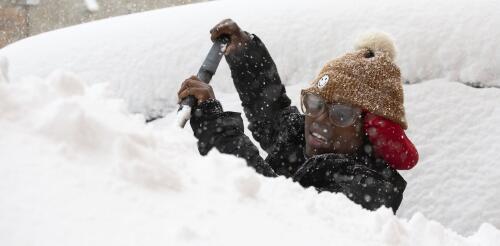Great Lakes
It’s hard for most people to imagine more than 4 feet of snow in one storm, but such extreme snowfall events happen along the eastern edges of the Great Lakes. The phenomenon is called “lake-effect snow.” It starts with cold, dry air from Canada. As the bitter cold air sweeps across the relatively warmer Great Lakes, it sucks up more and more moisture that falls as snow. Canadian winds pick up moisture over the Great Lakes, turning it into heavy snowfall on the far shore. NOAA I’m a climate scientist at UMass Amherst. In the Climate Dynamics course I teach, students often ask how cold, dry air can lead to heavy snowfall. Here’s how that happens. How dry air turns into snowstorms Lake-effect snow is strongly influenced by the differences between the amount of heat and moisture at the lake surface and in the air a few thousand feet above it. A big contrast creates con...
